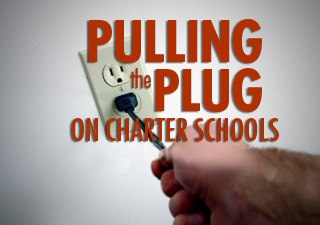Media
Attack on Charter Schools Shoddy and Misguided
 School districts across Pennsylvania are in a budget crunch, due to a combination of overspending, ballooning pension costs and a loss of $1 billion in federal stimulus funds that was never going to be permanent. Many are casting about for someone to blame, and in the last few weeks their favorite whipping boy has been Pennsylvania’s charter schools—with Auditor General Jack Wagner joining the lynch mob with a special report yesterday.
School districts across Pennsylvania are in a budget crunch, due to a combination of overspending, ballooning pension costs and a loss of $1 billion in federal stimulus funds that was never going to be permanent. Many are casting about for someone to blame, and in the last few weeks their favorite whipping boy has been Pennsylvania’s charter schools—with Auditor General Jack Wagner joining the lynch mob with a special report yesterday.
Wagner claims that Pennsylvania taxpayers “overpay” charter schools (which include cyber schools) to the tune of $365 million a year. “We are advocating a ceiling based on the national average,” he told reporters in Harrisburg. He suggests and amount of $10,000 per student in brick-and-mortar charter schools and $6,500 per student for cyber schools.
The Auditor General calculates the average cost-per-student in Pennsylvania for brick-and-mortar charters is $13,411, and $10,145 for cybers. Our analysis of charter school spending for 2009-10 shows roughly the same differences in per-student spending—charter schools just cost less.
Here’s a quick primer on how charter school funding works. Charter schools are public, and so fully funded through taxpayer dollars. When a child enrolls in a charter school, whether brick-and-mortar or cyber, a portion of the per-student funding already earmarked for his education “follows” him to the charter school.
How much follows the child is based on the average per-student spending of his resident school district. By law, they cannot be reimbursed for spending categories such as facilities acquisition, construction and improvement services, community/junior college programs, debt servicing and other items.
The bottom line: Charter schools spend less because they receive less, and their “actual” cost—just as it is for traditional public schools—is largely set by how much funding they receive.
Wagner’s conclusions are therefore woefully misguided. To him, despite spending less than school districts, charter schools still get too much. This is based on a comparison to four other states with high charter school enrollment, all of which spend less than Pennsylvania.
But his claim that charter schools spend too much should equally be directed at how much school districts spend. In fact, let’s examine regular school spending in the same four states Wagner used for comparison. In these states, spending per student was 12 to 34 percent less than Pennsylvania.
| Average Per-Student Spending: PA vs. Comparison States | |||
| State | Total* | Difference from PA | Percent Difference |
| Pennsylvania | $14,308 | ||
| Ohio | $12,592 | -$1,788 | -12% |
| Michigan | $11,781 | -$2,599 | -18% |
| Texas | $11,085 | -$3,295 | -23% |
| Arizona | $9,559 | -$4,821 | -34% |
| *Total and current expenditures per pupil in fall enrollment in public elementary and secondary education, by function and state or jurisdiction: 2008-09, Digest of Education Statistics, National Center for Education Statistics, http://nces.ed.gov/programs/digest/d11/tables/dt11_192.asp. | |||
So aren’t Pennsylvania school districts spending “too much” as well? Wagner’s response yesterday: School districts “may” be overspending, but we “know” charter schools are overspending.
Actually, we can be sure school districts have been on a spending spree. K-12 education spending has doubled in the last 15 years to $26 billion, while student performance has stagnated. At the same time, schools have added more than 35,000 staff—all while enrollment has dropped by roughly the same amount. We need only look to the self-inflicted budget holes in Harrisburg and Philadelphia school districts to understand the problem.
In practice, the only policy that ensures effective, efficient spending in education is school choice. School choice injects competition in our public education system, by offering families alternatives in charter, cyber and private schools—and that forces school districts to spend more wisely. School administrators in Pittsburgh, for example, freely admit that competition from charter schools forced them to cut excessive spending and streamline. And having these different schooling options in Pennsylvania already saves taxpayers $4.3 billion a year.
Schools could also save nearly $400 million a year on construction—their fastest-growing spending category—if Pennsylvania repealed its outdated, pointless prevailing wage law. Mr. Wagner admirably wants to save taxpayer dollars now that state and local budgets are squeezed. But there are legitimate ways to reduce education spending that would result in even higher savings, without needlessly choking the very schools that make our education system work better.